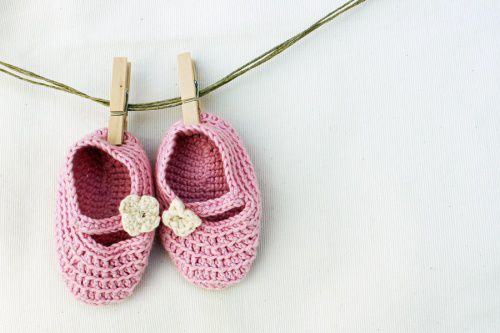The problem of sex-selective abortion is not limited to China and India, but is increasing in communities within Western countries, a new report by the pro-life Charlotte Lozier Institute says.
“I think for a long time we’ve been denying that sex-selective abortion happens in the United States,” said Anna Higgins, J.D., associate scholar with the Charlotte Lozier Institute.
However, she told CNA, “it does happen here.”
Countries like China, with its miserable human rights record, are notorious for sex-selective abortions because of the country’s long-time forced one-child family policy, now a two-child policy. Human rights activists have termed the situation “gendercide” because so many families choose only to have a boy to carry on the family name.
The practice has led to demographic disaster, with 33 million more men than women in the country, according to human rights activists.
Yet sex-selective abortion happens not just in China and India, but within Western countries as well, Higgins argues. In certain immigrant communities in the U.S. — including some Indian-American, Korean-American, and Chinese-American communities — the ratio of baby boys to baby girls can actually be much higher than China’s.
The normal ratio for boys to girls is 103 to 106 per 100, Higgins noted. The ratio is so consistent, she added, that “any kind of skewed sex ratio at birth cannot be explained away by natural variations.” If the ratio is any higher than this, sex-selection is probably the culprit. In China 116 boys are born for every 100 girls.
Areas like the Caucasus region at the border of Europe and Asia are experiencing similar demographic disparities. “There are 160 million missing girls across the globe because of sex-selective abortion, Higgins said. “It’s affecting the human society in general.”
And Western nations are not immune to this, she insisted, saying there is “a spike of sex ratio imbalance” in certain communities within these countries.
The overall demographics don’t reveal a national phenomenon of sex-selective abortion, Higgins maintained, but recent studies show that for third children in families — particularly in immigrant families with two daughters — the ratio spikes in favor of males. Any ratio above 106 boys to 100 girls is evidence of sex-selection, she suggested.
A recent Canadian study Higgins cited found that from 1990 through 2011, for Indian-born mothers, their “third birth” ratio was 138 boys to 100 girls. The “fourth birth” was 166 to 100.
In Ontario, among Indian-born mothers who had two daughters, the ratio for a third child was 196 boys to 100 girls. If a woman had two daughters and then had an abortion, the ratio for her third child was 326 boys to 100 girls. If she had multiple abortions, the ratio jumped again to 409 boys per 100 girls.
Sex-selective abortion is “lethal discrimination, sex discrimination against girls,” Higgins said. “Sex discrimination in any form is inherently unjust.”
New technology is also helping parents determine the sex of their child at an early stage of pregnancy — giving them more power to abort their child if they prefer the other sex.
One method is a “pre-implantation diagnosis” of the sex of the embryo with in vitro fertilization, Higgins said. Another is prenatal genetic testing as early as 7 to 10 weeks gestation. These tests being sold as a tool to help with “family balancing,” she commented, but this “amounts to saying we place value on someone because of their sex.”
This technology is currently allowed under U.S. law, which undermines the “moral authority” the U.S. can use to stop sex-selective abortion, advocates say.
“Currently, there is no prohibition on such technology for the purpose of sex selection in the United States,” Higgins said. “Such technology can easily be used to discriminate against either sex, which is no less ethically problematic.”
“With our national laws among the most permissive on the planet and sex-selection being legal up to birth in the vast majority of states, the U.S. lacks moral authority to oppose this and ultimately end this practice everywhere,” Chuck Donovan, president of the Charlotte Lozier Institute, said.
Other countries have already started cracking down on the practice. As of 2009, Vietnam, South Korea, Austria, New Zealand, and Switzerland all prohibited sex-selection while 31 countries outlawed its “social” use.
“Although not every country prohibits sex-selective abortion specifically, there is obviously a global awareness that prenatal sex-selection is unethical based on the sheer number of countries that prohibit preimplantation sex-selection techniques,” Higgins said of the numbers.
“The United States is, in fact, lagging behind the rest of the world on this front.”
Higgins, along with the pro-life group Susan B. Anthony List, is pushing for the House to pass the Prenatal Non-Discrimination Act which would prohibit sex-selective abortions, along with the solicitation of funds for these abortions or any “coercion” of woman to obtain an abortion on basis of sex, which happens in some communities, Higgins said.
Ultimately, the goal is to “inform the public that this is a discriminatory practice and we’re not going to stand for it,” she said, adding that discrimination is prohibited in employment and public accommodation, and birth should be no exception.
Photo credit: Ida Karolina Rosanda via www.shutterstock.com.

